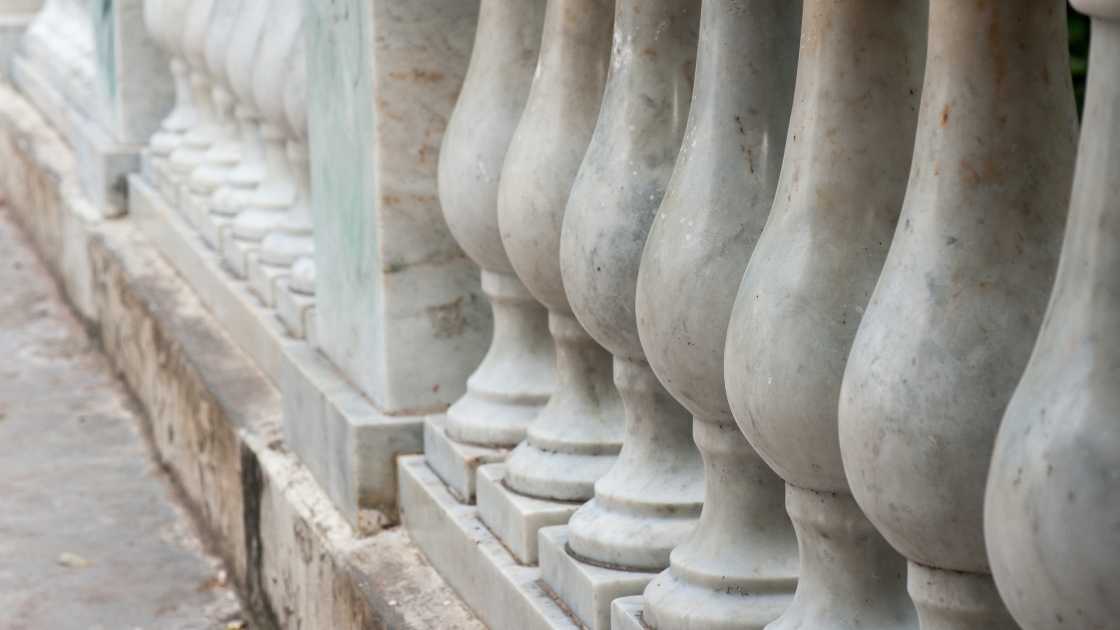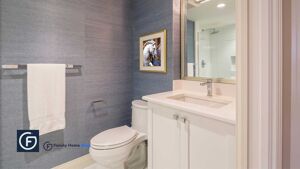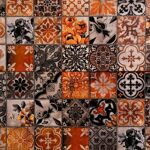Have you ever seen those beautiful faux marble columns and wished you knew how to paint them? Well, today is your lucky day! I will show you how to paint faux marble columns like a pro. This simple technique will make your columns look like real marble without all the hassle. So let’s get started!
Faux marble columns can add a touch of luxury to any room, and with a few easy steps, you can create beautiful columns like a pro. First, select the right paint color for your faux marble. If the marble is raw or unfinished, use a light color that will show up on the surface. If the marble is finished or has been painted previously, choose a darker color that will be more hidden.
What is Faux Marble Columns, & What are its Benefits?

Faux marble is a type of fake marble made from a different type of stone. Faux marble has many benefits, such as being lighter than true marble and making it easier to move and install. It also has a more realistic appearance, which can be useful in certain applications.
Prep Work is Key
Preparation is key when it comes to creating beautiful marble columns. The right tools, techniques, and concentration will help you create a work of art that will last long into the future. Keep these tips in mind when starting your column:
When selecting marble for your project, ensure it’s of good quality. Look for a marble that is relatively uniform in color and has few blemishes. If possible, select a marble from an established source rather than purchasing samples at a store.
Once you have selected your marbles, clean them thoroughly before beginning your project. Use hot soapy water and scrub with a soft cloth or brush until the marble is free of all dirt and debris. Allow the marble to dry completely before using it.
When working with marbles, be aware of their natural tendencies.
Things You Will Need
If you want to add some flair to your home décor, why not try your hand at marbling columns? It’s a fun and easy project that anyone can do, and it’s a great way to add a touch of luxury to your space. Here’s what you’ll need to get started:
- A column or other vertical surface to marble
- A container of water big enough to dip your column in
- A few drops of dish soap
- A cup of marble powder
- A paintbrush
- A hairdryer

Start by mixing a few drops of dish soap into your water container. Then, dip your paintbrush into the soap water and brush it on the surface you’re going to marble. Next, dip your column into the marble powder and hold it up to the hairdryer to remove any excess powder. Finally, dip your column into the soap water and hold it to the light to admire your handiwork!
Read Spanish Floor Tile Article for your floor decoration.
Applying the Base Coat
Applying the base coat is essential for creating a marbled appearance in columns. When applied correctly, it will help to create a uniform look across the board and prevent streaks from forming. Here are some tips to ensure a successful application:
- Use a thick layer of base coat. Too little will not give you the desired effect, while too much will cause your column to be streaky and difficult to paint.
- Apply base coat evenly throughout the entire column. Do not allow any spots to be dry or powdery where paint has been missed.
- Allow the base coat to dry completely before applying any colors. That will help keep colors from bleeding and make your project look messy.
- Use a brush with soft bristles when applying colorants. Harder bristles can cause scratches in the paint and affect its consistency.
Tips for the Marble Columns
You can create marbling columns in several ways, but the most common method is mixing powdered pigment and liquid water until a marble-like consistency is reached. The pigment can then be spread evenly over the surface to be marbled and allowed to dry. Once dry, any excess water can be removed using a cloth or paper towel, and the marbleized surface can be finished with a sealant if desired.
Adding the Glaze
Adding the glaze is a key step in creating a beautiful marbling column. Marbling is when small bubbles of color form on the surface of a liquid. When adding the glaze, use caution not to overspill as this can cause the paint to run, ruining your project. Begin by removing all of the old paint with a clean rag or piece of paper.
Once everything is clean and free from old paint, mix your chosen colorant with water until you have a smooth consistency. Next, apply the glaze using a foam brush or an old toothbrush. Be sure to work in sections, so you don’t cause too much pressure and force the paint out of the bristles. Finally, let the project dry before adding new colors or finishing touches.
Finishing up Marble Columns
Marbling columns are a popular addition to any home. However, they can be very dangerous if not installed and used properly. Here are eight tips for installing and using marbling columns safely:
Finishing up: As we near the end of this marbling column tutorial, there are a few things you should know. First and foremost is that the more colors you use, the more intense your marbling will be. Secondly, use a light hand while marbleizing to keep your columns looking their best. And finally, if you have trouble getting the marbleized effect you desire, feel free to experiment with different techniques until you find one that works best for you. With these tips in mind, your marbling columns will come out looking amazing!

Warning
- Always use a safety rope when marbling. That will help you avoid accidents and keep you safe.
- Make sure the marble is level before beginning your work. It will help ensure that your columns look uniform from top to bottom.
- Use a grout cleaner before cleaning your column surface. It will help remove any residual glue or sealant from the marble.
- Be careful not to drop marbles on the floor or walk on them while wet; this could cause damage or even injury.
Decide on the Type of Marble You Want to Paint.
While natural stone is the most common type of marble used for painting, imitation marbles are also perfect for this project.
Once you’ve decided on the type of marble you want to use, it’s time to gather supplies. You’ll need paint, a brush, and water. Some brands specifically make paint that is non-toxic and safe for use on marble.
Start by applying a thin layer of paint to the bottom of each column. Be sure to cover the entire surface evenly. Let the paint dry before moving on to the next step.
Prep your Marble Columns
Marbling columns are a popular column design choice for interior spaces. You can create various textures by adding these intricate items to any room. Here are some tips to help you prep your columns for marbling:
Choose the right column material. Marbling is possible with many different materials, but some are better suited than others. Wood is the most common choice, but YOu can use other materials like metal or plastic. Be sure to test the material before starting your project to ensure that it will marble well.
Prep the surface of your column before painting or staining it. That includes removing dust, debris, or grease with a vacuum cleaner and a cloth or Scotch-Brite pad. Make sure the surface is completely dry before proceeding.
Enjoy Your New Marble Columns!
Welcome to Enjoy your new marble columns! Whether you’re looking to update your home decor or add a touch of luxury, these columns are perfect for any purpose. Made of high-quality marble, these pieces will impress anyone who sees them. Not only are they beautiful and unique, but they’re also durable and easy to maintain. So why wait? Order your new marble columns today!
Read another article on Marble Slab Countertops.
Let’s your Columns Dry
Columns can be a beautiful addition to any room. However, they can become waterlogged and stained if they are not properly dried. Here are a few tips to help ensure your columns stay dry: -Make sure your column is in a well-ventilated area. -Avoid storing items on top of your column or placing heavy objects on top of it. -Give your column time to dry after using it. Allow at least 48 hours for complete drying.
Conclusion
If you want to paint faux marble columns like a pro, start by following these simple tips:
- Prepped your surface with a quality primer and paint.
- Use a light coat of painter’s tape to create the right texture and tone.
- Apply a dark color to the top of the tape, then remove it.
- Let the paint dry completely before applying the next layer of light color.









